P
Pacific Outdoor Products
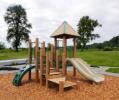
Pacific Outdoor Products began as Timber Playsystems, which Samuel Emmons founded in 1981. They offer both wood and steel commercial and residential play equipment, game court equipment, fitness courses, and site amenities. Located in Maple Valley, Washington, Pacific Outdoor Products is a family-owned business.
Palo Alto Junior Museum and Zoo
In Palo Alto, California, the Palo Alto Junior Museum and Zoo (JMZ) is where children and their caregivers can "explore, discover, create and play." The hands-on interactive science and nature museum exhibits are complimented by a small zoo of diverse wildlife and a nature play area.
Parallel Play
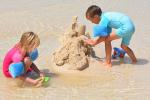
When studying play development in young children, parallel play is a description of children playing side by side, but not interacting with each other to continue their play.
Parent Cooperative Preschools International

Parent Cooperative Preschools International provides on-going support to families, educators, and social agencies who recognize the value of parents as teachers of their children and the necessity of educating parents to meet the developmental needs of their children.
Parents' Choice Foundation
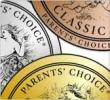
Author and educator Diana Huss Green gathered a group of parents who were concerned that their high standards for their children's education were not being fulfilled. They formed the Parents' Choice Foundation, a non-commercial clearinghouse to review children's books, toys, music, television, software, video games, websites, and magazines.
Park & Rec Trades

The Park & Rec Trades magazine, established in 1994, was an independent monthly super-tabloid publication targeted specifically to national, state, county, and city municipal park administrators and staff as well as national military facility grounds administrators and staff.
Park Prescriptions

Park Prescriptions is a movement to create a healthier population by strengthening the connection between the healthcare system and public lands across the country. The Park Prescriptions movement recognizes two basic needs: healthcare practitioners need to be educated on the role of the natural environment in individual health and on how to effectively prescribe it, and the park leaders need to seek input from the health care community in recreation planning.
Parker Brothers

George S. Parker, believing that strategy and amusement games could be enjoyed by adults as well as children, developed the classic games Monopoly, Flinch, Pit, Rook, Boggle, Risk, and Sorry.
Parker, David
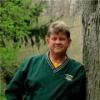
Involved with Park and Recreation Associations, David Parker has also become a safety inspector for CPSI and NPSI and worked with ASTM on safety issues. David Parker became a Certified Park and Recreation Professional (CPRP) in 1985.
Parks & Rec Business
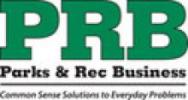
Parks & Rec Business Magazine (PRB) is a recreation industry resource for parks and recreation directors, staff, and managers. Published by Northstar Publishing, PRB includes information concerning play spaces, parks, fitness, sports, and aquatics as well as administration, leadership, programming, grounds, and maintenance.
Parks & Recreation Magazine

The Parks & Recreation Magazine is the recreation industry magazine for the National Recreation and Park Association (NRPA). It furthers their mission “to advance parks, recreation, and environmental conservation efforts that enhance the quality of life for all people.”Unknown Object As a monthly resource, Parks & Recreation Magazine is available in both hard copy and digital formats.
Parks Build Community
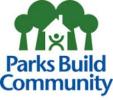
Parks Build Community is a national initiative that promotes the value of parks and recreation on the health and vitality of communities across America. Their mission is to select a park in an underserved area and transform it into a thriving gathering place for youth and adults.
Partnership for a Healthier America
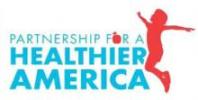
First Lady Michelle Obama announced the Let's Move campaign against childhood obesity on February 9, 2010. That same day the organization of the Partnership for a Healthier America (PHA) was also announced. PHA was organized to support the Let's Move campaign by "encouraging, tracking, and communicating commitments to healthier lifestyles from partner organizations."
Partnership for Play Every Day
Partnership for Play Every Day is an initiative to increase the spaces and quality of play for children and youth in America. Affiliated with more than 30 of the nation's leading non-profits, government agencies, universities, and corporations, the Partnership for Play Every Day hopes to create and sustain momentum for a national movement to have kids get 60 minutes of physical activity every day.
Pathways for Play
PlayCore, the Natural Learning Initiative (NLI), and American Trails joined together to create Pathways for Play, a program to create walking, hiking, and biking trails that have "play pockets" along the way. These play opportunities vary in size and contain a mix of natural and manufactured play elements, which are linked by pathways, greenways, trails, or sidewalks to encourage continuous movement.
PBS The Promise of Play

In the fall of 2000, The Institute for Play (IFP) created The Promise of Play, three one-hour documentaries to be aired on PBS as a miniseries.
PD Play

Originally Progressive Design Playgrounds, PDPlay has been recognized for its environmental leadership in using recycled materials. Their natural playgrounds incorporate sand, water, living plants, grassy hills, play walkways, ponds, foliage mazes, dirt trails, gardens, play acting stages, and reading amphitheaters into their designs.
PE4life
PE4life is a nonprofit agency that helps schools build fit kids by advocating for and assisting in the development and enhancement of physical education programs and physical activity opportunities in schools and communities.
Peaceful Playgrounds
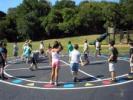
Peaceful Playgrounds started in 1995 with Dr. Melinda Bossenmeyer, Ed.D., who wanted more children involved with physical activity during recesses. Melinda designed a program using a variety of games in organized activities rather than the passive standing in line to use playground equipment or talking in small groups that she was seeing.
Peeples, Tom

Tom Peeples, a consultant on playground design and safety issues, has assisted in developing and promoting playground safety standards through his involvement with ASTM International (ASTM), the National Playground Contractors Association Inc. (NPCAI), and the National Recreation and Park Association (NRPA).
Peer Pressure

Peer pressure occurs when an individual experiences persuasion to participate in the same activities as those in their peer group, or to adopt similar values, beliefs, and goals as the group. For a child, their peer group is usually, but not always, of the same age group.
Penn State Playground Safety Conferences

The 1995 International Playground Safety Conference, held at Penn State University, was the first worldwide conference on this subject. The Conference Convener and Chair was Penn State University Professor Monty Christiansen, an international advocate for children's play.
Perceptual Motor Skills
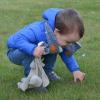
Perceptual motor skills refer to a child's developing ability to interact with his environment by combining the use of the senses and motor skills. This is viewed as a combined process where visual, auditory, and tactile sensory abilities are combined with emerging motor skills to develop perceptual motor skills.
Perfect Rubber Mulch
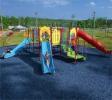
Julie Cole founded Perfect Rubber Mulch in 2000. Their tire recycling manufacturing plants throughout the U.S. take raw tires, extract the radial wire, and form the rubber into nuggets for playground surfaces, landscaping needs, equestrian arena footing, military training PT pits and ballistic rubber traps, and track and field artificial turf rubber infill.
Pestalozzi, Johann Heinrich

Johann Heinrich Pestalozzi was a social and educational reformer and writer in Europe during the late 18th and early 19th centuries. He believed that society could best be changed by education and that reform began with assisting the individual students to help themselves.
Physical Development

Physical development refers to the physical and biological changes that occur in humans between birth and adolescence. As a child grows and changes, he increases his ability to explore and interact with the world around him.
Physical Education
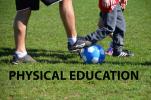
Physical education is an educational process of learning to develop specific knowledge, skills, and understanding to promote physical competence. The basic aim of physical education is to set aside daily a portion of the school day devoted to large-muscle activities that increase movement skills, enhance physical fitness, and positively influence the cognitive and affective development of children.
Piaget, Jean

Jean Piaget was a noted theorist in the field of developmental psychology and in the study of human intelligence. Play is an important element in Piaget's theory. It is a vehicle for the child to understand the world around him as well as an indicator of the child's cognitive development.
Pickleball

Pickleball is a sport played on a court that combines elements of tennis, badminton, and ping pong. The rules of the game have been designed to not include fast serves or spiked volleys so players of all ages and abilities can play together.
Pioneers in Public Recreation

George D. Butler wrote Pioneers in Public Recreation (1965) in the spirit of dedication to the men and women whose accomplishments shaped the "beginnings, growth, and significance of the recreation movement," a movement he believed to be "one of the outstanding developments of the twentieth century."
Planning for Play
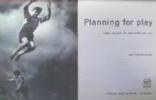
Lady Allen of Hurtwood, noting that concerning play there was "a wealth of experience, but little informed, published material," wrote Planning for Play in 1968 to assist those architects, planners, and leaders "determined to break away from the sterile barrack-type of playground of asphalt and mechanical equipment."
Planning Parks for People

Planning Parks for People was written by John Hultsman, Richard L. Cottrell, and Wendy Hultsman. This book takes an honest look at the outdoor recreation profession exposing mistakes that have been made and giving guidelines to aid in achieving better park design and recreation programs.
Plants & Play
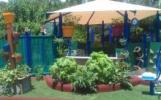
Plants & Play, a R&D division of Mosteller Design and Construction, Inc., designs garden play spaces for all age groups, from infants through seniors. Plants & Play structures encourage children and adults to play and move in a "Lean, Green, Serene" environment that is safe and easy to supervise.
Play = Learning

Play = Learning: How Play Motivates and Enhances Children’s Cognitive and Social-Emotional Growth was edited by Dorothy G. Singer, Roberta Michnick Golinkoff, and Kathy Hirsh-Pasek.
Play and Child Development

Play and Child Development is designed primarily as a textbook for upper division students to guide understanding of how play ties directly to child development.
Play and Playground Encyclopedia
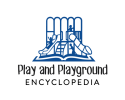
In 2009, Curtis Stoddard developed the concept of a business plan for a play and playground encyclopedia. The Play and Playground Encyclopedia mission statement is that the encyclopedia is to research and document play and playground information in a general nonbiased, fact-based synopsis that gives a reader a brief but accurate assessment of that play or playground information.
Play and Playground Magazine

Play and Playground Magazine is a national publication, published quarterly by Playground Professionals LLC, dedicated to the needs and interests of those involved with children's play and the playground industry.
Play and Playscapes

Joe L. Frost, EdD, had more than 50 years experience in research and teaching. Joe Frost authored books and articles on the subject of play, playgrounds, safety, children's poverty, and play and child development. One of his books, Play and Playscapes, addresses the nature and value of play and developmentally appropriate play environments for children.
Play Atlanta
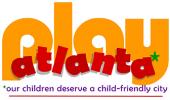
Formed in 2007 to satisfy one of the requirements for applying for KaBOOM!'s Playful City USA Award, Play Atlanta, formerly known as Atlanta Taskforce on Play, actively works to make Atlanta a great place to raise children with great places to play.
,
Play Every Day Act
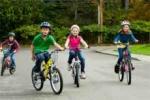
The PLAY Every Day Act was a bill proposed to help promote the national recommendation of physical activity to kids, families, and communities across the United States. The purpose of this Act was to help children, families, and communities achieve 60 minutes of physical activity every day, which is the national recommendation.
Play for All Guidelines

Play for All Guidelines: Planning, Design and Management of Outdoor Play Settings for All Children is an industry standard for planners, designers, and managers of outdoor play settings. It is a comprehensive design resource available for integrating children of all abilities in the same play area.
Play in American Life

Play in American Life is a compilation of essays written in honor of Dr. Joe L. Frost, best known for his work in the area of play and play environments. The fourteen essays examine play in America from historical, psychological, economic, and other perspectives and honor the thoughts and ideology of Dr. Frost with some referring to his actual research and others to his play concepts.
Play in Education

Published in 1915, Play in Education was written by Joseph Lee, one of the most influential of the recreation pioneers, who was known as the "Father of the Playground Movement." As early as the 1880s Lee was involved in working to provide playgrounds in underprivileged neighborhoods.
Play It Safe, An Anthology of Playground Safety
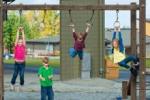
The original Play It Safe, An Anthology of Playground Safety was edited by Monty Christiansen in 1992. Hans Vogelsong joined Monty in editing the 2nd edition, which was published in 1996 by The National Recreation and Park Association (NRPA).
Play Mart
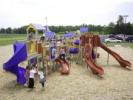
Beginning with wood play structures, Play Mart moved to using Recycled Structural Plastic and began manufacturing their own recycled plastic lumber for their designs. Play Mart offers play systems, nature play systems, fitness systems, themed designs, swings, site amenities, safety surfacing, and playground border options using Recycled Structural Plastic.
Play Today in the Primary School Playground

Play Today in the Primary School Playground is a compilation of papers presented at the 1988 "The State of Play: Perspectives on Children's Oral Culture" international conference held at the University of Sheffield and sponsored by the National Centre for English Cultural Tradition. The organizers of the conference and the editors of the resulting book, Julia C. Bishop and Mavis Curtis, maintain that the common belief of the decline of children's play needs to be reexamined in light of children's self directed traditional play.
Play-based Learning
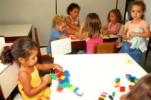
Child-centered, play-based learning is a whole-child educational approach that promotes academic, socio-emotional, and cognitive development through free play, which can also involve guided play by an adult. In guided play, teachers enhance children's exploration and learning with helpful guidance while being careful not to be invasive in the children's play.
Play: How It Shapes the Brain, Opens the Imagination, and Invigorates the Soul

Play: How It Shapes the Brain, Opens the Imagination, and Invigorates the Soul describes the significance of play in the lives of animals and humans and how free play develops the social and locomotive skills in children that are necessary for creative thinking later in life.
Playable10 International Design Competition
Inspired by the 1954 Playable Sculpture Competition sponsored by the Museum of Modern Art in New York City, Georgia Tech College of Architecture and Atlanta Taskforce on Play (ATOP) organized a four-category international competition in 2009 to design playground structures and playspaces called Playable10 International Design Competition.
Playborhood
Since 2007, Mike Lanza has posted to his blog, Playborhood, longing for the "Leave it to Beaver" days that seem to be lost forever. Concerned that unstructured free play has "virtually vanished from the lives of most children in America," he is committed to voicing his concerns to build a community of parents who will become more aware of the problems and seek to implement the best solutions.
Playborhood: Turn Your Neighborhood into a Place for Play

Mike Lanza wrote Playborhood: Turn Your Neighborhood into a Place for Play as a “road map” for solving the “free play problem” confronting families living in a world of safety fears, school encroachment, and adult structured activities. Mike highlights eight diverse neighborhoods where free play is being supported and then outlines six key suggestions for creating such a neighborhood where children can “laugh and run and think... every day.”
Playcare, Inc
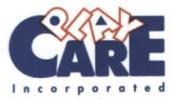
Playcare, Inc. designs play spaces, provides playground safety audits, and conducts playground safety trainings for Philadelphia, Pennsylvania and surrounding counties. They design play areas that are "safe, sensory rich, stimulating, developmentally appropriate, curriculum-based, accessible, and cost effective," with the majority of their work involving day care and child care centers.
PlayCore

PlayCore is the parent company of several play and recreation companies and is known for their educational research and programming as well as their diverse family of brands. The company believes in building stronger communities by advancing play through research, education, and partnerships.
Playful City USA
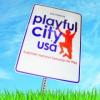
Playful City USA, sponsored by the Humana Foundation, is an application-based national recognition program honoring cities and towns that make play a priority and use innovative programs to get children active, playing, and healthy. Playful City USA communities make a commitment to play and physical activity by developing unique local action plans to increase the access to play in their community.
Playful Teaching Practices

Playful Teaching Practices: A Little Book of Leadership Resources, Techniques and Activities offers positive and playful ways to facilitate a group through checklists and stories from the authors’ own experiences.
Playground Association of America
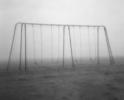
The Playground Association of America was formed to support and expand the playground movement. In America this movement began in Boston, Massachusetts as a solution to problems stemming from increasing urbanization, industrialization, and immigration.
Playground Builders

Playground Builders is a nonprofit registered charity dedicated to building playgrounds in war-torn areas in the world. They believe that playgrounds are places where "kids can be kids, community members can feel connected and empowered, new possibilities find a strong foundation and peace and hope begins."
Playground Clearing House

Playground Clearing House specializes in playground safety, playground surface testing, and accident evaluation. Since the 1990s, Playground Clearing House has worked closely with Alpha Automation in the development of the Triax 2000, a surface impact tester (SIT).
Playground Construction School Course Manual

Presented by the National Playground Contractors Association Inc. (NPCAI) and written by Curtis and Nicole Stoddard, the Playground Construction School Course Manual is a course manual which covers start to finish details of constructing a playground as well as information on support organizations, safety standards, and business regulations.
Playground Ideas
Marcus Veerman, an Australian teacher, arrived in Mae Sot, Thailand in 2008 to build classrooms. Instead he found the greatest need was to build playgrounds. Marcus founded the not-for-profit organization Playground Ideas (formerly, Go Play!) to design and build play spaces in developing countries by using local materials, labor, and community involvement.
Playground Medic
Playground Medic, based in Hawthorne, New York, is committed to making playgrounds safe "through identification of hazards and maintenance of playgrounds." They achieve this through playground audits or inspections, maintenance and repair of playground equipment, and seminars to train playground staff, day care workers, and teachers aides.
Playground Movement

The playground movement in America began as an answer to the industrial revolution realities of crowded cities and long work days. Hand-in-hand with the settlement houses being formed in the late 19th century, the playground movement sought to save the poor, immigrant, and homeless children from unhealthy crowded tenement neighborhoods.
Playground Safety Is No Accident

Playground Safety Is No Accident: Developing a Public Playground Safety and Maintenance Program was first published by the National Recreation and Park Association in 1992 through their National Playground Safety Institute and the Park District Risk Management Agency. The 2nd edition, printed in 1998, reflects the updated ASTM International F1487 Standard Consumer Safety Performance Specification for Playground Equipment for Public Use.
PlayGroundology
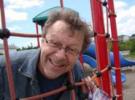
Written by Alex Smith, PlayGroundology is a blog that "scours the web for all things bright, beautiful and occasionally tarnished about the world of playgrounds." Unique and interesting playgrounds, both old and new, are highlighted as well as posts about design, art, history, advocacy groups, and civic engagement as they relate to playgrounds.
Playgrounds for Free

Playgrounds for Free: The Utilization of Used and Surplus Materials in Playground Construction was written by Paul Hogan and published by The MIT Press in 1974. The book details the potential of using “junk” materials and involving the community to build playgrounds.
Playgrounds for Young Children
Playgrounds for Young Children: National Survey and Perspectives was edited by Sue C. Wortham and Joe L. Frost. This book reports the findings of the Preschool Playground Equipment Survey, which is the result of 349 surveys conducted by 62 trained volunteers in 31 states.
Playgrounds, Their Administration and Operation
Playgrounds, Their Administration and Operation was published in 1936 by A. S. Barnes and Company. Edited by George D. Butler for the National Recreation Association, the book addresses the concerns of playground administrators and their day to day operations.
Playgrounds: The Planning, Design and Construction of Play Environments

Peter Heseltine and John Holborn, coauthors of Playgrounds: The Planning, Design and Construction of Play Environments, re-examine how children relate to their environment and focus on the developmental needs of children as they learn and grow through play.
PlayGuard Safety Surfacing

Since the 1990s, PlayGuard Safety Surfacing has been manufacturing recycled rubber playground safety surfacing. As a brand of ECORE International, PlayGuard provides surfacing products for playgrounds as well as school gyms, sports centers, child day cares, indoor play areas, rooftops, and patios.
PlayMark
PlayMark (formerly known as Eagle Play Structures) manufactures and installs commercial playground equipment as well as site furnishings and shade shelters in the Mid-Atlantic region of the United States.
PlayPump
Trevor Field of South Africa saw the plight of women and young girls as they waited for windmill-driven pumps or traveled distances to get water for their families, which was often not clean water. Because young girls are tasked with getting water, they often have a disproportionate disadvantage for an education.
PlaySafe

PlaySafe LLC is a global recreational consulting and playground service provider supporting numerous government agencies, private organizations, and schools. Founded in 1997 by Sam "Butch" DeFillippo, this company aids its customers in the design, purchase and installation of the safety playground equipment.
Playskool

Playskool, Inc. manufactures preschool and infant toys that engage young children in play and learning. What began as the idea of two retired women schoolteachers continues today with the belief that "Play is nature's classroom."
PlayToday! Foundation
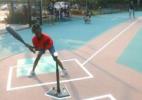
Headquartered in Charleston, South Carolina, The PlayToday! Foundation was founded in July 2010 by Channing Proctor and Steve Hatton. Channing began the Charleston Miracle League, and Steve started the Summerville Miracle League in Summerville, South Carolina.
Playtop Safer Surfacing
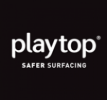
Playtop Safer Surfacing manufactures impact-absorbing wet-pour safety surfacing for play spaces and walkways at children's playgrounds. Designed to minimize the risk of injury to children who fall in playgrounds, the Playtop surfacing material is a continuous, joint-free, porous material made from rubber granules and polyurethane binders.
Playwork and Playworkers

Playwork is the support given by adults in an unobtrusive way of children's open-ended, creative free play. During a play session, Playworkers are available to assist a child if needed, but strive to be as inconspicuous as possible to allow the children to direct their own play.
Playworks
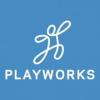
Playworks is a national, nonprofit organization that bolsters learning by providing safe, healthy, and inclusive play opportunities for school children. Founded by Jill Vialet under the name Sport4Kids, the name was changed to Playworks in July 2009.
Playworld

Manufacturing since the 1950s, Playworld offers a variety of play systems for children as well as adults. Their products encourage physical activity and fitness, including electronic elements, motion play equipment, climbing boulders, rope bridges, fitness stations, and nature-themed elements.
Please Touch Museum
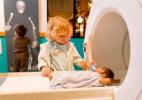
The Please Touch Museum in Philadelphia, Pennsylvania is a nonprofit interactive museum for young children, which provides "learning opportunities through play" that lead to a "lifetime of learning and cultural awareness." Their mission centers around being: playful and fun, creative and innovative, educational, safe and clean, diverse, child-centered, family-focused, and collaborative.
Plumb, Steven

Steven S. Plumb is an instructor and consultant for park maintenance and playground safety issues. For forty years he has been active in designing, installing, operating, and maintaining public playgrounds as well as teaching and consulting concerning playground safety and maintenance.
PolyFiberCrete
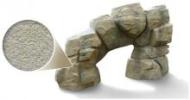
PolyFiberCrete is a lightweight synthetic concrete-sandstone textured material molded into solid play structures and site furnishings. Using a patented process of cellular concrete, polymer additives, molds, sand, air bubbles, and sandblasting, UPC Parks makes grip-textured climbing rocks and walls, caves, ledges, benches, planters, and playground sculptures.
Pop Warner Little Scholars
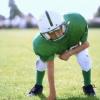
Pop Warner Little Scholars, Inc. (PWLS) is a nonprofit football, cheer, and dance program for youth ages 5-16. PWLS requires all participants to maintain academic standards, recognizing that scholastics and athletics "go hand in hand." While they provide fun athletic learning opportunities in football, cheer, and dance, they also emphasize "the ideals of sportsmanship, scholarship and physical fitness."
Pop-Up Adventure Play

Pop-Up Adventure Play (PUAP) is a "start-up social enterprise" that advocates and serves as a catalyst for play opportunities for children, families, and communities. PUAP's work is greatly influenced by the international adventure playground movement and the United Kingdom's profession of playwork.
Poured in Place
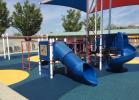
Poured in Place is a unitary safety surfacing that is used for playgrounds, water parks, dog parks, sports and fitness facilities, and many diverse applications. It is a visually attractive, versatile, durable, and nonslip surfacing that minimizes the impact of falls to the surface and meets Americans with Disabilities Act guidelines.
Pratt, Caroline

An innovative educator at the forefront of American educational reform, Caroline Pratt believed that play is a child's natural and most meaningful way of learning. Caroline Pratt is credited for developing wooden blocks, called unit blocks, which continue to be used in classrooms today as essential tools for learning.
Preoperational Stage

The preoperational stage is the second of four stages proposed by Jean Piaget to describe the cognitive development of infants, children, and adolescents. The preoperational stage (ages 2-7) moves from toddlerhood through early childhood.
President's Council on Sports, Fitness, and Nutrition
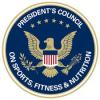
The President's Council on Sports, Fitness, and Nutrition (PCSFN) is an advisory committee whose mission is to educate and empower Americans to live a healthy lifestyle which includes regular physical activity and good nutrition.
Preston, John
John Preston was an expert on playground safety. He worked with the Consumer Public Safety Commission to publish the Handbook for Public Playground Safety. Preston revised and updated the handbook in order to clarify the different recommendations and keep it current. This handbook has become a very important part of the playground industry and is known by those in the industry as "Preston's Handbook."
Pretend Play

Pretend play is a form of symbolic play where children use objects, actions or ideas to represent other objects, actions, or ideas using their imaginations to assign roles to inanimate objects or people. Toddlers begin to develop their imaginations, with sticks becoming boats and brooms becoming horses. Their play is mostly solitary, assigning roles to inanimate objects like their dolls and teddy bears.
Profiles in Leadership
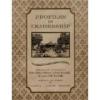
Comprising 34 biographies of men and women, the Robert W. Crawford Recreation and Park Hall of Fame, Profiles in Leadership honors "some of the forgotten giants in this field who have paved the way for today's leaders." In doing so, Profiles in Leadership also provides a history of the public recreation and park movement in America.
Project Fit America

Founded in 1990, Project Fit America (PFA) is a national non-profit public charity committed to physical fitness for children. Sponsored by numerous hospitals, foundations, and health organizations, Project Fit America donates to schools broad-based fitness programs, which are in over 750 schools across the United States.
Proprioception

Proprioception is an automatic sensitivity mechanism in the body that sends messages through the central nervous system relaying information to the body about how to react to stimuli and with what amount of tension. The muscles, joints, and connective tissues contain specialized sensory receptors that enable the body to process the information and turn that information into action.
Protective Barrier
A Protective Barrier on a playground structure is defined as "An enclosing device around an elevated surface that prevents both inadvertent and deliberate attempts to pass through the device." Protective barriers are required to protect children from jumping or falling from elevated surfaces.
Protrusion
A protrusion on playground equipment is a projection that has the potential to cause bodily injury to a user who comes in contact with it. Protrusions are not allowed to be on playground equipment. A Certified Playground Safety Inspector (CPSI) uses his projection gauges to determine whether projections are protrusions.
Providence Children’s Museum

Providence Children's Museum is an interactive hands-on museum designed to "inspire learning through active play and exploration." They believe in the vital role that unstructured child-led play has in facilitating both learning and creativity. Located in Providence, Rhode Island, they serve southern New England children ages 1-11 years and the adults in their lives.
Public Playground Safety Handbook

The Public Playground Safety Handbook, also known as Publication #325, was published by the U.S. Consumer Product Safety Commission, most recently in November 2010. The publication of this handbook is designed to give guidelines to those concerned with public playground safety.

